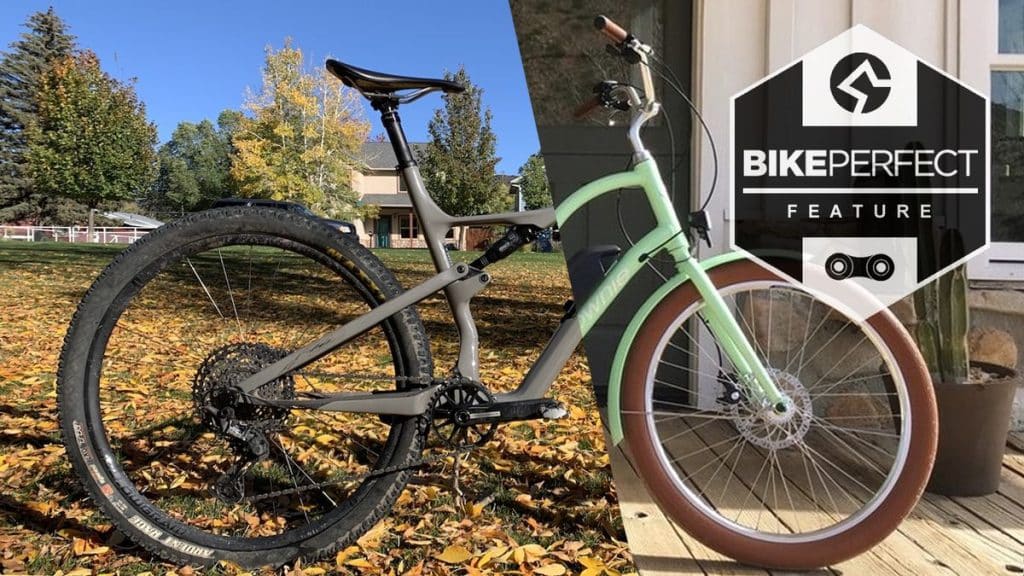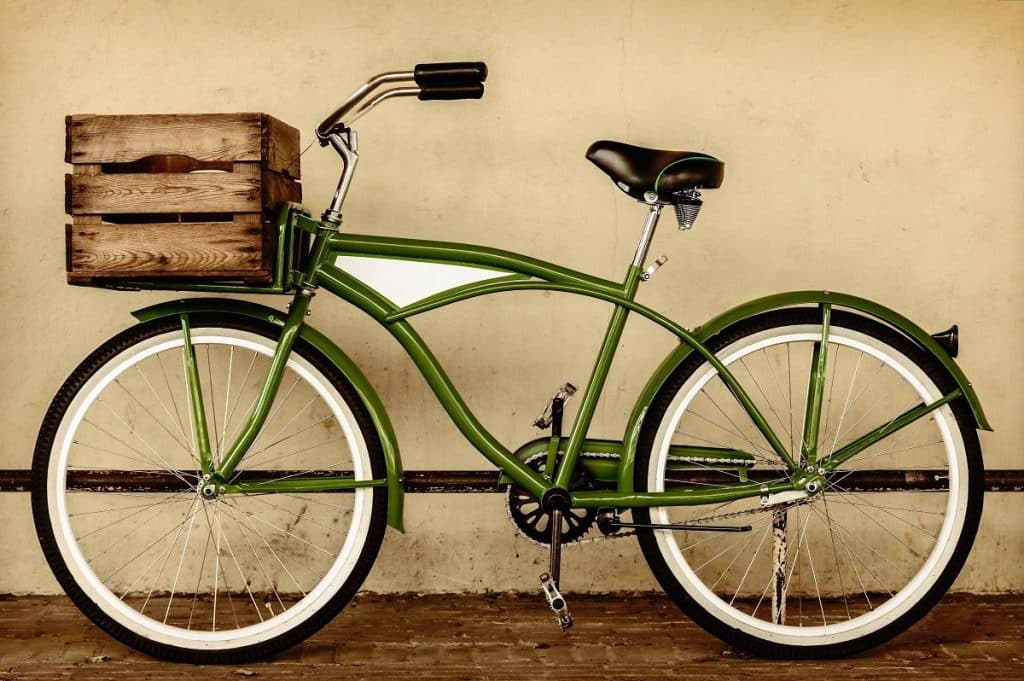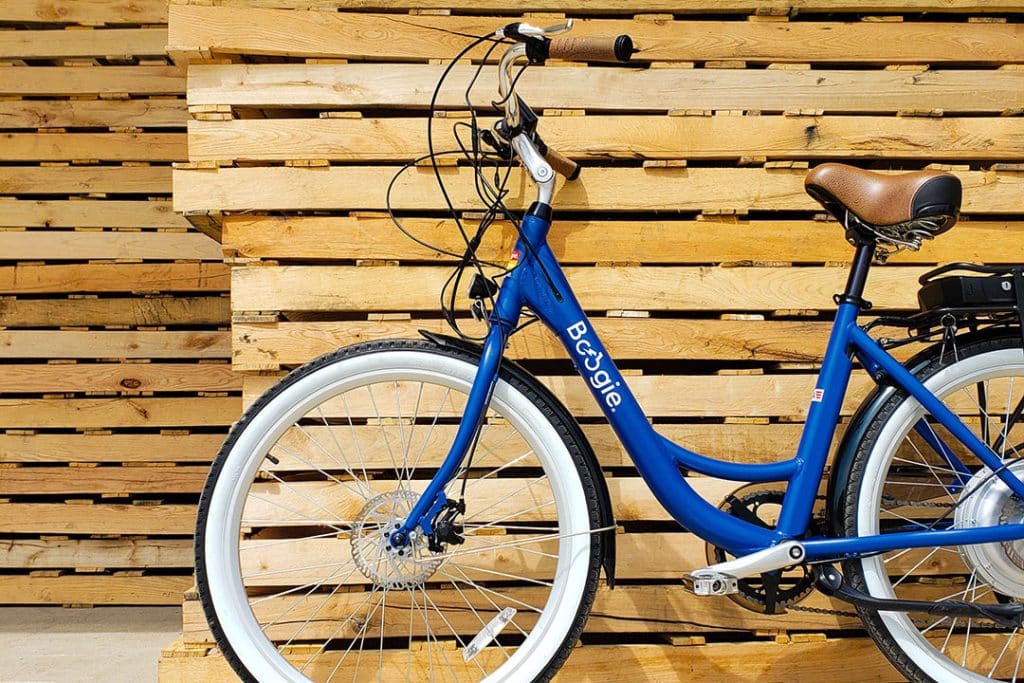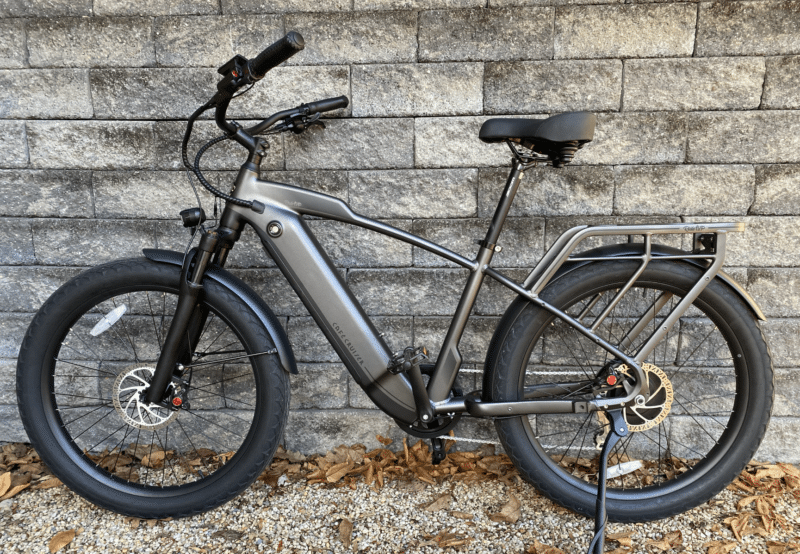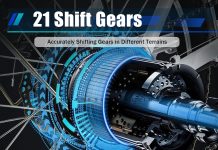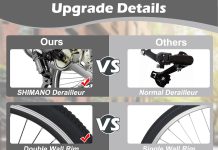Have you ever hopped on a cruiser bike and wondered if they are harder to pedal than other types of bicycles? Well, we’re here to put your worries to rest. In this article, we’ll explore the truth behind the notion that cruiser bikes are difficult to pedal. So, grab a seat (preferably on a comfy cruiser bike) and get ready to pedal through the facts about these stylish rides.
Table of Contents
Causes of Difficulty in Pedaling Cruiser Bikes
Weight and Design
One of the main reasons why cruiser bikes can be difficult to pedal is their weight and design. Cruiser bikes are known for their heavy frames, which can make acceleration and pedaling uphill more challenging. The design of cruiser bikes prioritizes comfort and style over efficiency, resulting in a heavier and less aerodynamic bike. The weight and design of a cruiser bike can make it harder to generate and maintain momentum, leading to increased effort required during pedaling.
Lack of Gearing Options
Another factor that can contribute to the difficulty of pedaling a cruiser bike is the limited gearing options. Unlike other types of bikes, such as road bikes or mountain bikes, cruiser bikes often have a single-speed or a limited number of gears. This lack of gearing options can make it harder to find the right gear ratio for different riding conditions, especially when faced with steep hills or strong headwinds.
Tire Type and Width
The type and width of the tires on a cruiser bike can also affect the ease of pedaling. Cruiser bikes typically have wider tires, which can create more rolling resistance and require additional effort to pedal. The wide tires are designed for stability and a comfortable ride, but they can hinder the bike’s efficiency. Additionally, the tread pattern of the tires can impact how easily the bike rolls, with more aggressive treads slowing down the bike and making pedaling more challenging.
Frame Geometry and Riding Position
The frame geometry and riding position of a cruiser bike can contribute to the difficulty in pedaling. Cruiser bikes are designed with a relaxed and upright riding position, which can be comfortable for leisurely rides but may create inefficiencies when it comes to pedaling. The upright position shifts the rider’s weight backward, reducing the power transfer from the legs to the pedals. This can make it harder to generate momentum and pedal with ease, especially for longer distances or at higher speeds.
Techniques to Make Pedaling Easier on Cruiser Bikes
Using Proper Body Positioning
One technique to make pedaling easier on a cruiser bike is to use proper body positioning. This involves maintaining a balanced and centered posture while pedaling. By keeping your back straight and your weight evenly distributed between the pedals, you can optimize your power transfer and pedal with less effort. Avoid slouching or leaning heavily on the handlebars, as this can cause unnecessary strain on your upper body and make pedaling more challenging.
Maintaining Momentum
Maintaining momentum is crucial for easier pedaling on a cruiser bike. Once you have gained some speed, try to maintain it by pedaling consistently and smoothly. Sudden stops and starts can make it harder to regain momentum, requiring more effort to get the bike moving again. When approaching a hill, try to carry your momentum as far as possible before starting to pedal uphill. This can help you conserve energy and make the uphill climb less strenuous.
Incorporating Cadence
Cadence refers to the speed at which you pedal, measured in revolutions per minute (RPM). A higher cadence can make pedaling easier on a cruiser bike. Aim to maintain a cadence of around 70 to 90 RPM, as this allows you to pedal efficiently without putting excessive strain on your muscles. If your cadence is too low, it can be more challenging to generate power and maintain a smooth pedaling motion. Practice pedaling at different cadences and find the rhythm that feels most comfortable and effective for you.
Investing in Upgrades
If you find that pedaling a cruiser bike is consistently difficult, you may consider investing in upgrades that can improve its performance. Upgrading the bike’s components, such as the drivetrain or tires, can make a significant difference in how easily the bike pedals. Adding gears or a wider range of gear options can make tackling hills and variable terrain more manageable. Swapping out the wide tires for narrower, more efficient ones can also reduce rolling resistance and make pedaling easier. Consult with a bike specialist or visit a reputable bike shop to explore the upgrades that are compatible with your cruiser bike.
This image is property of cdn.mos.cms.futurecdn.net.
Factors Impacting Ease of Pedaling
Fitness and Strength Level
The fitness and strength level of the rider can have a considerable impact on the ease of pedaling a cruiser bike. Riders who are more physically fit and have stronger leg muscles may find pedaling easier, as they can generate more power and sustain it for longer periods. Regular exercise and strength training can help improve fitness and strengthen the muscles used for pedaling, making it easier to tackle challenges on a cruiser bike.
Riding Conditions and Terrain
The riding conditions and terrain also play a role in the ease of pedaling on a cruiser bike. Riding on flat, smooth surfaces will generally require less effort compared to tackling steep hills or rough terrain. Cruising along a beach boardwalk or a paved bike path with minimal inclines will allow for a more effortless pedaling experience. On the other hand, riding on hilly or uneven terrain can require extra effort to pedal uphill or navigate through obstacles.
Wind Resistance and Aerodynamics
The presence of wind resistance and the aerodynamics of the rider can impact the ease of pedaling. When riding against a headwind, more effort is required to overcome the resistance and maintain a steady pace. The aerodynamics of the rider also play a role, with a more streamlined position reducing the drag caused by wind resistance. While cruiser bikes are not designed for speed, optimizing your riding posture and reducing wind resistance can make pedaling easier, especially when faced with windy conditions.
Quality and Maintenance of Bike Parts
The quality and maintenance of the bike’s parts can affect the ease of pedaling on a cruiser bike. Regular maintenance, such as keeping the chain lubricated and ensuring the brakes are properly adjusted, can help maintain the bike’s performance. Worn-out or poorly maintained components, such as a rusty chain or worn-out tires, can increase resistance and make pedaling more challenging. Keeping the bike in good condition by addressing any necessary repairs or replacements will contribute to a smoother and easier pedaling experience.
Comparative Analysis with Other Bike Types
Cruiser Bikes vs. Mountain Bikes
Cruiser bikes and mountain bikes are designed for different purposes and terrain, which affects the ease of pedaling. Mountain bikes are typically equipped with a wide range of gears and more aggressive treaded tires, allowing for better traction and control on rough, off-road trails. In comparison, cruiser bikes favor comfort and style over performance, with fewer gears and wider tires. However, cruiser bikes excel in providing a smooth and relaxed ride on flat surfaces or gentle slopes, making them more suitable for casual cruising or beachside rides. Mountain bikes, while versatile, may require more effort to pedal on flat terrain due to their heavier frame and knobby tires.
Cruiser Bikes vs. Road Bikes
Road bikes are known for their light and aerodynamic design, optimized for speed and efficiency on paved roads. They typically have multiple gears and narrow, smooth tires that reduce rolling resistance and allow for higher speeds. In comparison, cruiser bikes prioritize comfort and a more leisurely riding experience, with a heavier frame and wider tires. While road bikes are built for speed, cruiser bikes are designed for relaxation and enjoyment. As a result, pedaling a road bike may require less effort and provide a faster and more efficient riding experience compared to a cruiser bike.
Cruiser Bikes vs. Hybrid Bikes
Hybrid bikes combine features of both road bikes and mountain bikes, offering a balance between speed, comfort, and versatility. They typically have a wider range of gears than cruiser bikes, allowing for easier pedaling on various terrains. Hybrid bikes also have a more relaxed riding position compared to road bikes, providing a similar level of comfort to cruiser bikes. The ease of pedaling on a hybrid bike can vary depending on the specific model and its intended use. In general, hybrid bikes offer a middle ground between the efficiency of road bikes and the leisurely ride of cruiser bikes.
This image is property of www.icebike.org.
Tips for Enjoying the Ride on a Cruiser Bike
Choosing the Right Bike for Your Needs
When it comes to enjoying the ride on a cruiser bike, selecting the right bike that fits your needs and preferences is essential. Consider factors such as the bike’s weight, gearing options, and frame geometry. If you anticipate a lot of uphill riding or varying terrains, opting for a cruiser bike with more gears can make pedaling easier. Ensure that the bike’s frame geometry and riding position provide a comfortable fit for your body.
Warming Up and Stretching
Before setting off on a ride, it’s beneficial to warm up your muscles and perform some stretching exercises. This helps prepare your body for pedaling and reduces the risk of muscle strains or cramps. Focus on stretching the muscles in your legs, including your calves, quadriceps, and hamstrings. A quick warm-up on a stationary bike or a short walk can also be beneficial in getting your blood flowing and loosening up your joints.
Utilizing Correct Gear Ratios
Understanding and utilizing the correct gear ratios can greatly enhance your riding experience on a cruiser bike. Experiment with different gear combinations to find the most comfortable and efficient pedaling cadence. When faced with a hill or a strong headwind, shift to a lower gear to make pedaling easier. On the other hand, when riding on flat terrain or picking up speed, shift to a higher gear to maintain momentum. The key is to find the gear ratio that allows you to pedal with the least amount of effort while maintaining a comfortable and efficient pace.
Practicing Proper Bike Fit and Posture
Proper bike fit and posture are essential for maximizing comfort and efficiency while pedaling a cruiser bike. Adjust the height of the seat so that your leg is almost fully extended when the pedal is at its lowest position. This allows for a powerful and efficient pedal stroke. Ensure that your knees are slightly bent while pedaling and avoid locking them, as this can lead to discomfort and strain. Maintain an upright and relaxed posture, keeping your back straight and your weight evenly distributed between the pedals and the handlebars. This helps optimize power transfer and minimize fatigue.
Trends in Cruiser Bike Manufacturing
Advancements in Frame Materials
Cruiser bike manufacturing has seen advancements in frame materials, leading to lighter and more durable options. Traditional cruiser bikes were often made of steel, which contributed to their heavy weight. However, modern cruiser bikes are now available in materials like aluminum and carbon fiber, which offer improved strength-to-weight ratios. These advancements make newer cruiser bikes lighter and more maneuverable, making pedaling easier without compromising on comfort and style.
Introduction of Electric Cruiser Bikes
The introduction of electric cruiser bikes has been a significant trend in the industry. Electric cruiser bikes incorporate a motor and a battery, providing pedal-assist or full electric power when needed. This innovation eliminates the efforts needed for manual pedaling, making it easier and more enjoyable to ride a cruiser bike for longer distances or uphill. The electric motor can be adjusted to different power levels, allowing riders to customize the amount of assistance they receive. Electric cruiser bikes open up new opportunities for individuals who may have physical limitations or prefer a more relaxed riding experience.
Integration of Lightweight Components
Manufacturers are increasingly integrating lightweight components into the design of cruiser bikes, contributing to easier pedaling. Lightweight materials, such as carbon fiber or high-quality alloys, are now used in various parts of the bike, including the handlebars, saddle, and pedals. These lighter components reduce the overall weight of the bike, making it easier to accelerate, maintain momentum, and pedal for longer periods without feeling fatigued. The integration of lightweight components ensures that cruiser bikes remain comfortable while also improving their performance.
Innovative Pedal-assist Technology
Pedal-assist technology is another innovative trend in cruiser bike manufacturing. This technology provides an additional power boost to the rider’s pedaling efforts, making it easier to pedal. Pedal-assist is different from full electric power, as it requires the rider to pedal in order to activate the motor. The level of assistance can be adjusted to suit the rider’s preference, with different power settings available. With pedal-assist technology, riders can conquer challenging terrains or longer distances with less effort, enhancing the overall riding experience.
This image is property of www.smalltownbikeco.com.
Cruiser Bikes and Exercise
Cruiser Bikes for Low Impact Exercise
Cruiser bikes are an excellent option for low impact exercise. The relaxed riding position and comfortable seat of a cruiser bike put less strain on the joints and muscles compared to other high-impact activities such as running or high-intensity cycling. Pedaling a cruiser bike at a moderate pace can help increase cardiovascular fitness, strengthen leg muscles, and improve overall endurance. Additionally, the enjoyable and leisurely nature of cruising on a bike can make exercise more enjoyable and sustainable in the long run.
Cruiser Bikes for Relaxation and Fun
Cruiser bikes are not only a means of exercise but also a way to relax and have fun. Whether you’re strolling along the beach, exploring a scenic bike path, or leisurely riding around your neighborhood, the comfortable and laid-back nature of a cruiser bike encourages relaxation and enjoyment. The slower pace allows you to take in your surroundings and appreciate the beauty of your surroundings. Cruising on a bike can be a great way to de-stress, connect with nature, or simply enjoy quality time with family and friends.
Cruiser Bikes for Commuting and Recreation
Cruiser bikes can also serve as a convenient mode of transportation for commuting or running errands. With the addition of accessories such as racks, baskets, or panniers, you can easily carry your belongings or groceries while pedaling around town. The comfortable riding position and relaxed pace make cruiser bikes ideal for shorter commutes or recreational rides. By choosing a cruiser bike for your daily commute, you can incorporate physical activity into your routine and reduce your carbon footprint, all while enjoying a pleasant and stress-free ride.
Cruiser Bikes for Senior Adults
Cruiser bikes are particularly well-suited for senior adults who may have specific physical limitations or desire a more comfortable and relaxed riding experience. The step-through frame design of many cruiser bikes allows for easy mounting and dismounting, making it accessible for individuals with limited flexibility or mobility. The wide, cushioned seats provide added comfort, and the upright riding position alleviates strain on the back and wrists. Cruiser bikes offer a safe, low impact, and enjoyable form of exercise for seniors, promoting better overall health and well-being.
Improvements in Cruiser Bike Technology
Ergonomic Handlebar Grips
Improved handlebar grips are a significant advancement in cruiser bike technology. Ergonomic handlebar grips offer a more comfortable and secure grip, reducing fatigue and discomfort during longer rides. These grips often feature a contoured shape that supports the natural position of the hand and reduces pressure points. They may also incorporate materials with vibration-dampening properties, minimizing the impact felt on rough surfaces. Upgrading to ergonomic handlebar grips can make a noticeable difference in the ease and enjoyment of pedaling a cruiser bike.
Suspension Systems for Enhanced Comfort
Cruiser bikes are now equipped with suspension systems to enhance overall comfort and smooth out the ride. Suspension forks or seat post suspension are common features found in modern cruiser bikes. These systems absorb the impact of bumps, potholes, or uneven surfaces, reducing the strain and jolts felt by the rider. By improving comfort and reducing vibrations, suspension systems make pedaling easier and more enjoyable, especially on rough or bumpy terrain.
Efficient Hub Gearing Systems
Newer cruiser bikes are incorporating more efficient hub gearing systems, such as internally geared hubs. These systems provide a wider range of gear options without the need for external derailleurs. With internal gearing, gear changes can be made while stationary or under load, allowing for seamless shifting and smoother pedaling. Internal hubs also prevent the chain from coming off or getting caught, reducing the need for frequent adjustments or maintenance. Efficient hub gearing systems improve the ease of pedaling on a cruiser bike, allowing for a more enjoyable and versatile riding experience.
Optimized Wheel and Tire Combination
Manufacturers are optimizing wheel and tire combinations for cruiser bikes, improving their rolling efficiency and handling. The choice of lighter and more responsive wheels, combined with narrower and low-rolling resistance tires, can significantly reduce the effort required to pedal a cruiser bike. These optimized combinations offer better traction and control while ensuring a smooth and comfortable ride. Upgrading to wheels with improved efficiency and pairing them with high-quality tires can make a noticeable difference in the ease of pedaling, enhancing the overall performance of a cruiser bike.
This image is property of cdn.arstechnica.net.
Factors to Consider Before Purchasing a Cruiser Bike
Purpose and Intended Use
Consider the purpose and intended use of the cruiser bike before making a purchase. Are you looking for a bike primarily for leisurely rides along the beach or for daily commuting? Understanding your specific needs and preferences will help you choose a cruiser bike that aligns with your intended use. If you plan on tackling more challenging terrains or longer distances, consider a cruiser bike with additional gearing options or pedal-assist technology to make pedaling easier.
Budget and Affordability
Set a budget for purchasing a cruiser bike and consider the affordability of different models. Cruiser bikes are available at various price points, ranging from budget-friendly options to more premium models. While higher-priced bikes may offer advanced features or lighter materials, it’s essential to choose a bike that fits within your budget. Look for a cruiser bike that offers the best value for money while still meeting your requirements and desired features.
Preferred Features and Accessories
Identify the features and accessories that are important to you in a cruiser bike. Do you prefer a single-speed or multiple gears? Are fenders, racks, or baskets necessary for your needs? Knowing your preferred features and accessories will help narrow down the options and guide your decision-making process. Consider if there are any specific customization options or accessories that can enhance the ease of pedaling or overall riding experience.
Test Riding Different Models
Before finalizing your decision, take the opportunity to test ride different models of cruiser bikes. This allows you to experience firsthand how each bike feels and performs. Pay attention to the ease of pedaling, the comfort of the riding position, and the overall handling of the bike. Testing different models will help you determine which bike is the most comfortable and enjoyable for your unique riding style and preferences.
Conclusion
While cruiser bikes may pose some challenges when it comes to pedaling, there are several techniques and factors that can contribute to an easier and more enjoyable riding experience. Understanding the causes of difficulty in pedaling cruiser bikes, such as weight and design, lack of gearing options, tire type and width, and frame geometry and riding position, allows you to identify potential areas of improvement. Implementing techniques like using proper body positioning, maintaining momentum, incorporating cadence, and investing in upgrades can greatly enhance the ease of pedaling on a cruiser bike. It’s also important to consider factors impacting ease of pedaling, such as fitness and strength level, riding conditions and terrain, wind resistance and aerodynamics, and the quality and maintenance of bike parts.
Comparing cruiser bikes with other bike types, such as mountain bikes, road bikes, and hybrid bikes, provides valuable insight into their differences and how they affect the ease of pedaling. Additionally, considering trends in cruiser bike manufacturing, improvements in cruiser bike technology, and the benefits of cruiser bikes for exercise, relaxation, commuting, and senior adults helps in making an informed decision. Finally, factors such as purpose and intended use, budget and affordability, preferred features and accessories, and test riding different models should all be taken into account before purchasing a cruiser bike. By carefully evaluating these aspects, you can find a cruiser bike that maximizes ease of pedaling and fits your specific needs and preferences, allowing for a more enjoyable and effortless riding experience.
This image is property of mtbbendigo.com.


